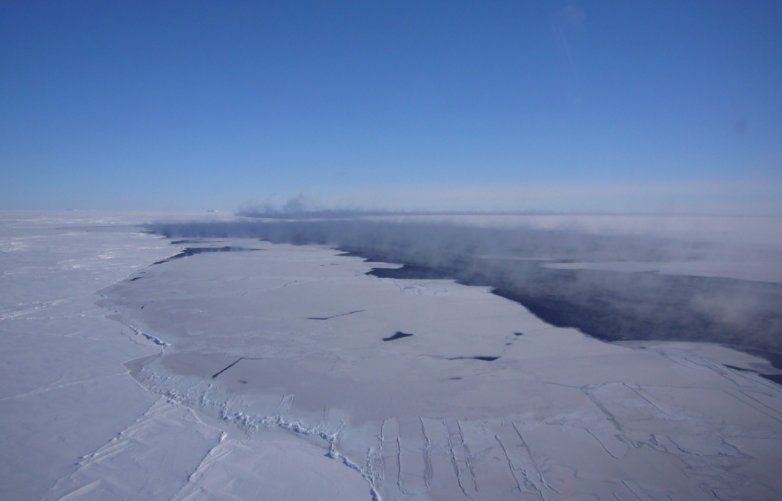Giant Hole Suddenly Re-Opens In Antarctica And Scientists Don’t Know Why
A giant hole almost the size of the state of Maine has re-opened in Antarctica’s winter sea ice cover and scientists don’t know why. The enormous hole is incredibly puzzling because of its odd behavior.
The hole, known as a polynya, was discovered about a month ago in Antarctica’s Weddell Sea as a team of scientists from the University of Toronto and the Southern Ocean Carbon and Climate Observations and Modeling project used satellite technology to monitor a similar, much smaller, hole that opened last year.

Scientists say it’s the first time a hole of this magnitude has been observed in the Weddell Sea in over 40 years.
A similar hole that was even bigger (250,000 square kilometers) was detected in the same location back in the 1970s. However, it disappeared for several decades before showing back up, throwing a huge kink in many scientific explanations for its existence.
Now researchers are trying to figure out why it recurred.
“We don’t really understand why it went away for 40 years and has come back now,” Kent Moore, professor of physics at the University of Toronto, told CBS News. “It’s like an enigma on many levels.”
There are two types of polynyas: coastal and open-ocean. Coastal polynyas form right at the coast, mainly due to strong winds which blow ice out of the area.
“These coastal polynyas occur all the time. They’re always there,” Moore said. “Polynyas that form deep in the ice pack are a lot rarer. It’s a different mechanism.”
The current best guess is that warmer salt water from deep under the ice has managed to squeeze its way through the cold layer of fresh water that typically insulates it, causing a warm patch and ultimately melting the ice and forming a huge gap.
That’s a fairly straightforward explanation, but it doesn’t fully address the odd timing of the hole, including its 40-year absence and seemingly spontaneous rebirth.
As scientists continue to hone their climate models and perfect their predictions, they’re getting closer to being able to accurately simulate the exact process at work, but a full explanation may still be years away.



 Creators of mankind
Creators of mankind Description of “Tall white aliens”
Description of “Tall white aliens” Where they came from?
Where they came from? About hostile civilizations
About hostile civilizations The war for the Earth
The war for the Earth “Tall white aliens” about eternal life
“Tall white aliens” about eternal life Video: “Nordic aliens”
Video: “Nordic aliens” Aliens
Aliens Alien encounters
Alien encounters The aliens base
The aliens base UFO
UFO Technology UFO
Technology UFO Underground civilization
Underground civilization Ancient alien artifacts
Ancient alien artifacts Military and UFO
Military and UFO Mysteries and hypotheses
Mysteries and hypotheses Scientific facts
Scientific facts


















